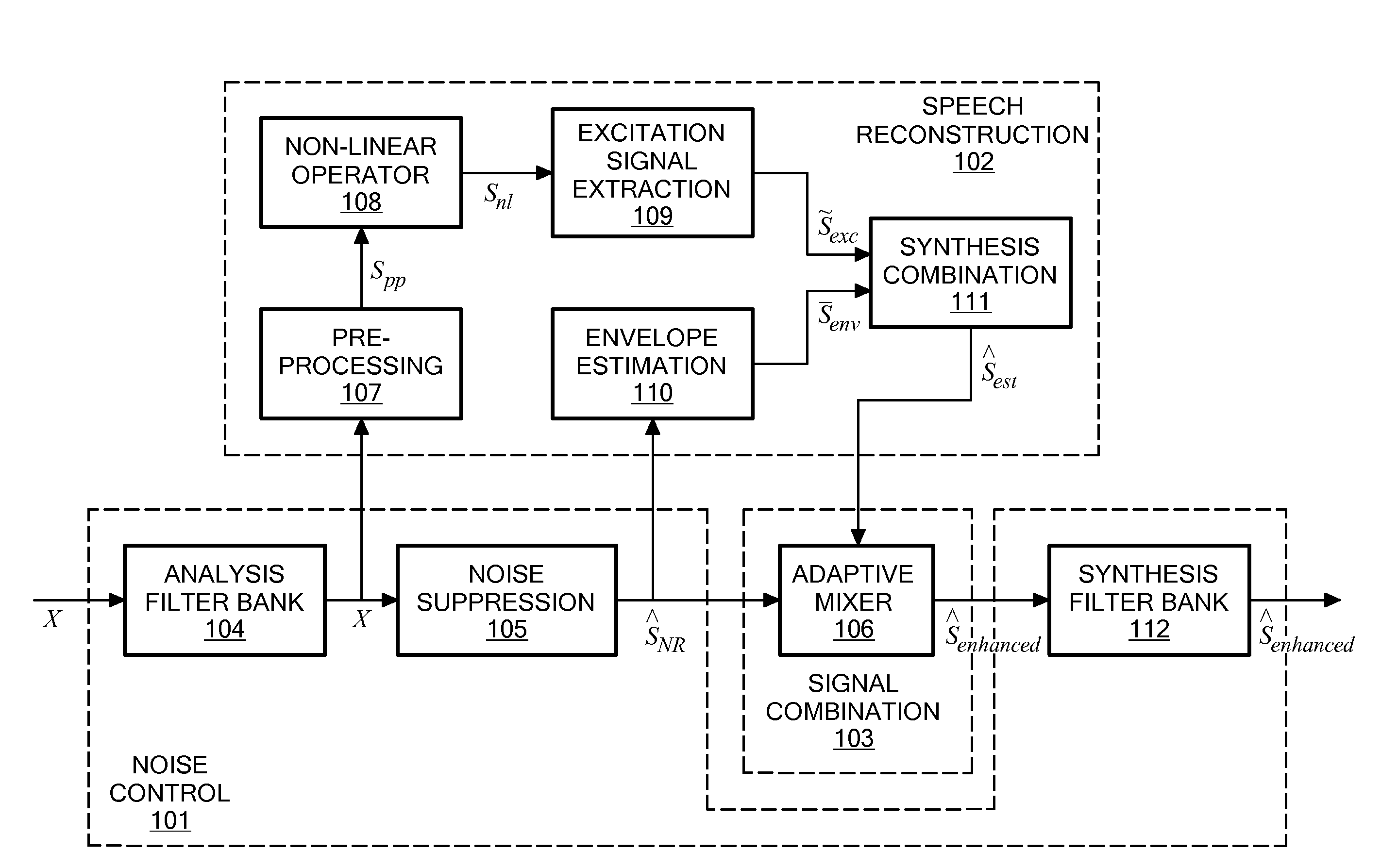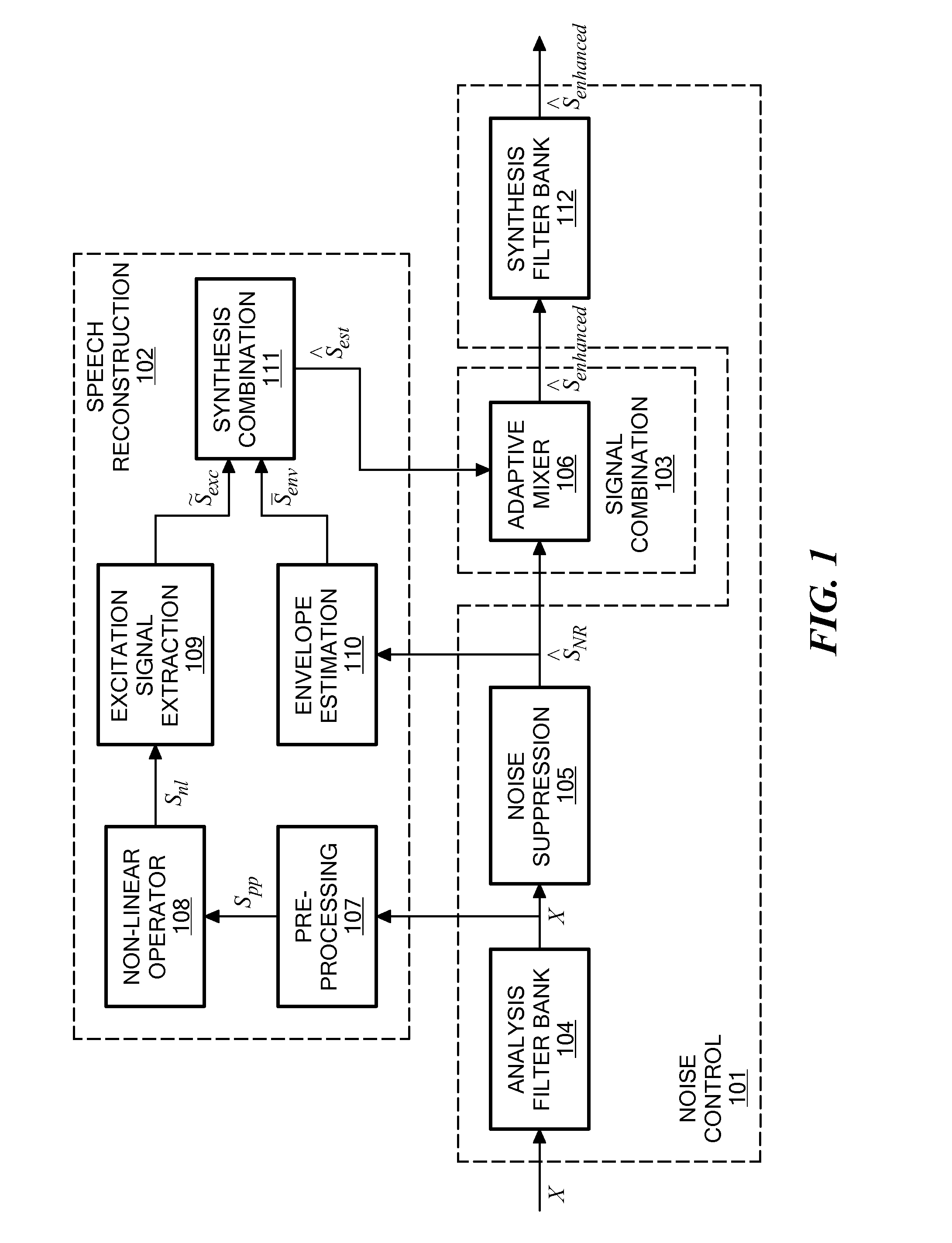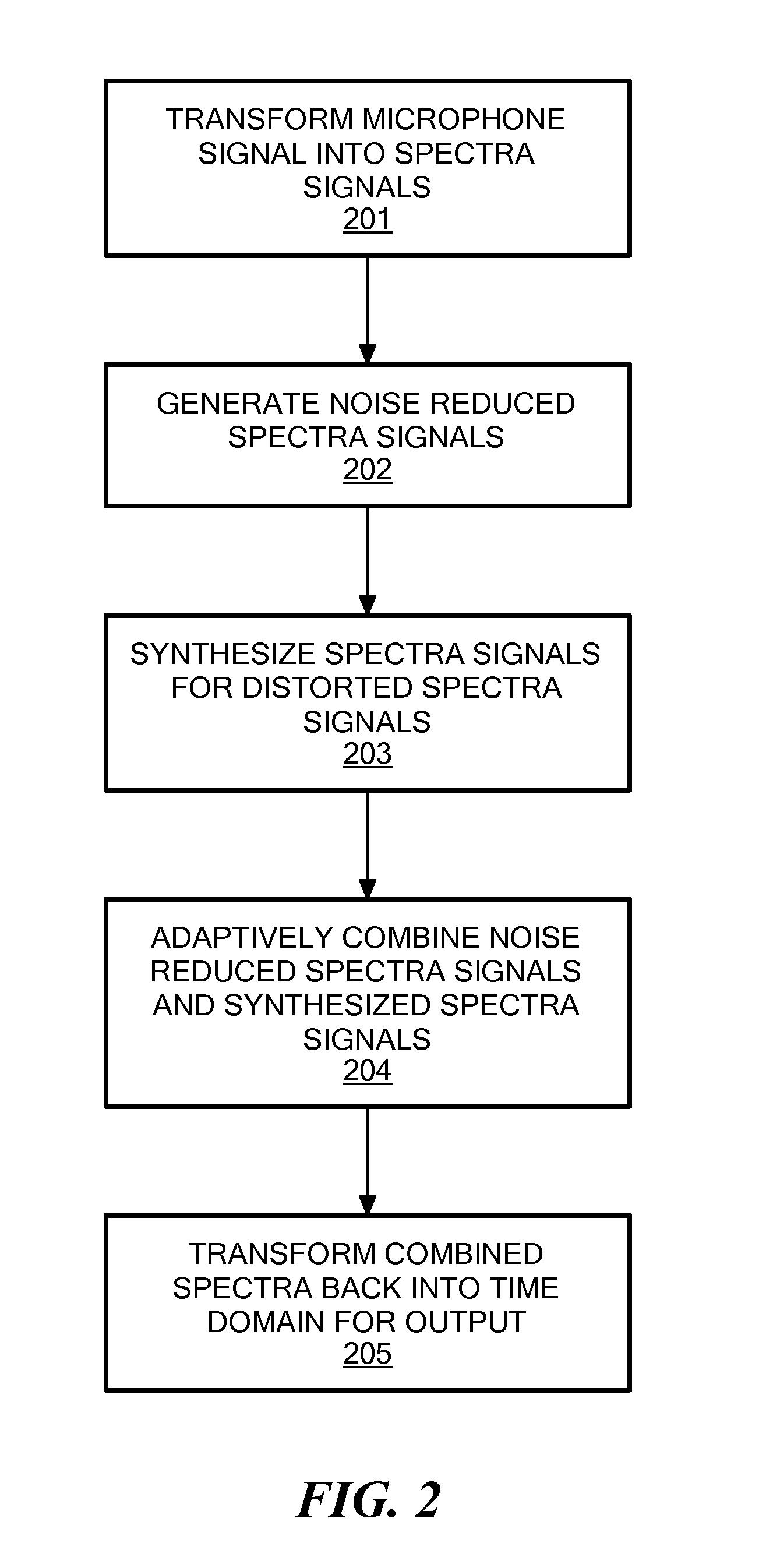Speech enhancement
a speech and signal processing technology, applied in the field of speech enhancement, can solve the problems of increasing noise levels with lower frequency, frequency domain processing produces noisy short-term spectra signals, and does not account for human perception of signal quality, etc., to achieve the effect of improving speech component signals
- Summary
- Abstract
- Description
- Claims
- Application Information
AI Technical Summary
Benefits of technology
Problems solved by technology
Method used
Image
Examples
Embodiment Construction
[0014]Embodiments of the present invention are directed to enhancing highly distorted speech using a computationally efficient partial speech signal reconstruction algorithm. The partial signal reconstruction exploits the correlation of the speech components and replaces highly disturbed speech component signals with a corresponding synthesized speech component signal. The synthesized speech component signal is based on speech components with sufficient signal-to-noise ratio (SNR) using a nonlinear operator (nonlinear characteristic) as well as relevant features extracted from the noisy speech signal. The synthesized speech component signals are combined with the noise reduced speech component signals to generate an enhanced speech component signal output. Specific embodiments may operate on speech component signals in either the time domain or in the frequency domain. The following discussion is specific to operation in the frequency domain, but those in the field will appreciate t...
PUM
 Login to View More
Login to View More Abstract
Description
Claims
Application Information
 Login to View More
Login to View More - R&D
- Intellectual Property
- Life Sciences
- Materials
- Tech Scout
- Unparalleled Data Quality
- Higher Quality Content
- 60% Fewer Hallucinations
Browse by: Latest US Patents, China's latest patents, Technical Efficacy Thesaurus, Application Domain, Technology Topic, Popular Technical Reports.
© 2025 PatSnap. All rights reserved.Legal|Privacy policy|Modern Slavery Act Transparency Statement|Sitemap|About US| Contact US: help@patsnap.com



